
Dr. Mario is a 1990 puzzle video game developed and published by Nintendo for the Nintendo Entertainment System, Famicom, and Game Boy. It was produced by Gunpei Yokoi and designed by Takahiro Harada. The soundtrack was composed by Hirokazu Tanaka.

Wario is a character in Nintendo's Mario video game series that was designed as an arch-rival to Mario. Wario first appeared as the main antagonist and final boss in the 1992 Game Boy game Super Mario Land 2: 6 Golden Coins. His name is a portmanteau of the name Mario and the Japanese word warui, meaning "bad". Hiroji Kiyotake designed Wario and Charles Martinet voiced the character from 1993 to 2023, as well as other characters in the series, including Mario, Luigi, and Waluigi.

Wario World is a platform video game developed by Treasure and published by Nintendo for the GameCube. Part of the Wario series, it was released in Europe, North America and Australia in 2003 and Japan in 2004. The game's plot centers on Wario and his quest to regain his treasure and his castle from the evil gem, Black Jewel.
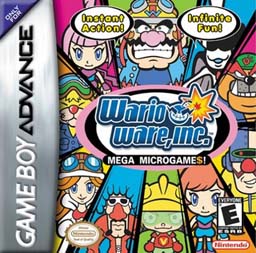
WarioWare, Inc.: Mega Microgames!, stylized as WarioWare, Inc.: Mega Microgame$! and known as WarioWare, Inc.: Minigame Mania in the PAL region, is a minigame compilation video game developed and published by Nintendo for the Game Boy Advance. The debut title in the WarioWare series, the game is about rapid completion of "microgames", short minigames given to the player consecutively and with increasing speed per each game complete. The game's concept was inspired by the "Sound Bomber" mode of Mario Artist: Polygon Studio for the Nintendo 64DD. The music and sound effects were recycled from Wario Land 4. The game was produced by Takehiro Izushi and directed by Hirofumi Matsuoka. Matsuoka was also the director of Polygon Studio. Mega Microgames! was released in 2003; in Japan in March, in North America and Europe in May and in Australia in June.

Super Mario 64 DS is a 2004 platform game developed and published by Nintendo for the Nintendo DS. It was a launch game for the DS. Super Mario 64 DS is a remake of the 1996 Nintendo 64 game Super Mario 64, with new graphics, characters, collectibles, a multiplayer mode, and several extra minigames. As with the original, the plot centers on rescuing Princess Peach from Bowser. Unlike the original, Yoshi is the first playable character, with Mario, Luigi, and Wario being unlockable characters in early phases of the game.
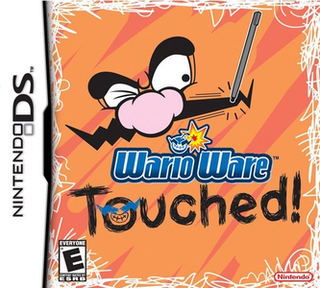
WarioWare: Touched! is a minigame compilation party video game released by Nintendo for the Nintendo DS. The fourth installment of the WarioWare series, and the first of three on the Nintendo DS, the game involves rapidly completing "microgames" — simple minigames lasting extremely short periods of time — as quickly as possible. The microgames are exclusively controlled with the Nintendo DS's touchscreen and microphone.

WarioWare: Twisted! is a video game for the Game Boy Advance, developed by Nintendo SPD with Intelligent Systems and published by Nintendo. It was released on October 14, 2004 in Japan; May 19, 2005 in Australia; and May 23, 2005 in North America. The second game in the WarioWare series and the seventh in the Wario series overall, Twisted! was the last Wario game to be released on a Game Boy family system.
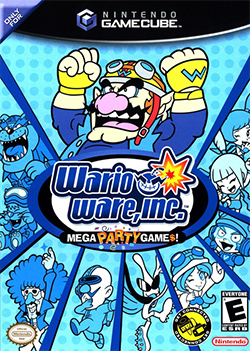
WarioWare, Inc.: Mega Party Game$! is a party video game for the GameCube. A remake of WarioWare, Inc.: Mega Microgames!, and the second installment in the WarioWare series, the game translates the "microgame" gameplay of Mega Microgames! to be playable in a multiplayer environment. It comes with eight special multiplayer modes for up to four players that all involve the known microgames in some way.
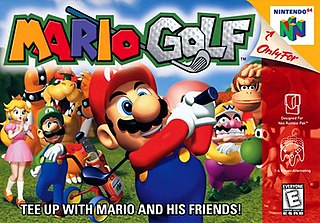
Mario Golf is a 1999 sports game developed by Camelot Software Planning and published by Nintendo for the Nintendo 64. Mario, his friends, and his enemies play golf on a variety of Mario-themed courses. Following NES Open Tournament Golf, it is the second game in the Mario Golf series. Camelot also developed a Game Boy Color version, which adds role-playing elements.

WarioWare: Smooth Moves is a party video game developed by Nintendo SPD and Intelligent Systems. The game was published by Nintendo for its Wii video game system in Japan in December 2006, and in Europe, North America, and Australia in January 2007. It is the fifth game in the WarioWare series of games, and the only game in the series to be physically released for the Wii. Like its predecessors, WarioWare: Smooth Moves is built around a collection of microgames that last about five seconds each, and which require that the player hold the Wii Remote in specific positions. The game offers the microgames to the player in rapid succession, by first instructing the player to hold the Wii Remote in a specific manner, and then showing them the microgame. The microgames are divided into several stages, each of which loosely connects the microgames with the help of a story. Additionally, this was the first spin-off Mario game to be released for the console.

Wario is a video game series, a spin-off of the Mario franchise. It comprises various video games created by Nintendo, starring the character Wario. The series began with Wario Land: Super Mario Land 3, the first game to feature Wario as a playable character. The Wario series includes mostly platforming video games and minigame compilations, but also includes other genres.
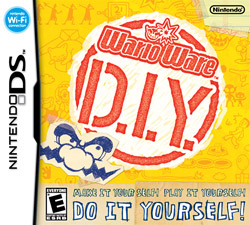
WarioWare D.I.Y., known as WarioWare: Do It Yourself in the PAL region, is a minigame compilation and game creation system by Nintendo SPD and Intelligent Systems and published by Nintendo for the Nintendo DS. It is the seventh title in the WarioWare series and the last to be developed for the Nintendo DS family of systems. Formally revealed at Nintendo's conference in October 2008, the game was released in Japan on April 29, 2009. It was released in 2010 in North America, Europe, and Australia respectively and was accompanied by a separate WiiWare title, WarioWare: D.I.Y. Showcase.
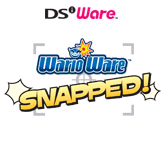
WarioWare: Snapped! is a minigame compilation party video game developed by Nintendo SPD Group No.1 and Intelligent Systems and published by Nintendo for the Nintendo DSi's DSiWare digital distribution service, and is part of the WarioWare series of video games. It is the sixth game in the series.

Toad, known in Japan as Kinopio, is a fictional character who primarily appears in Nintendo's Mario franchise. A humanoid with a mushroom-like head, Toad was created by Japanese video game designer Shigeru Miyamoto, and is portrayed as a citizen of the Mushroom Kingdom and is one of Princess Peach's most loyal attendants, constantly working on her behalf. Toad is usually seen as a non-player character who provides assistance to Mario and his friends in most games, but there are times when Toad takes center stage and appears as a protagonist, as seen in Super Mario Bros. 2, Wario's Woods and Super Mario 3D World.

Mario vs. Donkey Kong is a crossover spin-off video game series of both the Mario and Donkey Kong franchises, based on puzzle platforming, marking the return of Pauline and the rivalry between Mario and Donkey Kong.

WarioWare: Get It Together! is a party video game developed by Intelligent Systems and published by Nintendo for the Nintendo Switch. It is the tenth installment in the WarioWare series, following WarioWare Gold (2018) for the Nintendo 3DS. The game was released worldwide on September 10, 2021 and sold 1.34 million copies worldwide. It is the final game in the WarioWare series to feature Charles Martinet as the voice of Wario before his retirement from voicing the character in 2023.

WarioWare: Move It! is a party video game developed by Intelligent Systems and published by Nintendo for the Nintendo Switch. It is the eleventh installment in the WarioWare series, the second WarioWare game to be released on the Nintendo Switch, after Get It Together (2021), and the first direct sequel in the WarioWare series, being a follow-up to the 2006 Wii game, WarioWare: Smooth Moves. It was released on November 3, 2023.


















